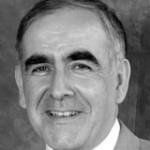 Like most doctors, my conference schedule is usually mapped out well in advance, anticipating the complex leave requirements of trainees and colleagues in an ever busier department of geriatric and stroke medicine.
Like most doctors, my conference schedule is usually mapped out well in advance, anticipating the complex leave requirements of trainees and colleagues in an ever busier department of geriatric and stroke medicine.
This year, while on a 12 month secondment to the rapidly evolving Irish programme in traffic medicine, the constraints on my timetabling are correspondingly freed, and taking in an impromptu conference is now not only possible but also akin to a stolen pleasure.
And so it was with the European Society of Aesthetics, whose poster I discovered by chance less than a week before their conference when attending a diploma show for art and industrial design at the new campus of the Dublin Institute of Technology.
Set in the stylishly renovated residuum of what had been Ireland’s oldest and largest public psychiatric hospital, the Victorian buildings were an ideal setting for both the graduate show and conference.
My own interest in aesthetics arises from our research track in the National Centre for Arts and Health (based in our hospital) on the role of arts, culture, and leisure in health, and in particular the challenge of aesthetic deprivation in healthcare settings.
Akin to the invisibility of transport as a mediator of health and wellbeing, aesthetics is an important aspect of our humanity which is rarely articulated outside of the subjects of philosophy and aesthetics, despite its elevated place in Maslow’s 1970 revision of his hierarchy of needs.
One possible barrier is the perception of an elitist flavour to the term “aesthetics” in the English language, compared to its more comfortable presence in everyday discourse in French and German, and reflected in the high proportion of presentations from these linguistic areas. Although aesthetics was clearly a major element of classical philosophy, it traces its roots as a modern discipline to its “adult baptism” as a discipline by Baumgarten in 1735.
While I have to put my hands up and confess to have frequently been out of my depth in discussions on the finer aspects of how Kant, Merleau-Ponty, and Deleuze teased out the elements of aesthetics, the proceedings were an invaluable crash course in modern aesthetics.
Delegates at this boutique sized conference were largely philosophers, artists, and art historians, and the programme included a participatory artwork based on Wittgenstein’s seventh proposition, about that which lies beyond speech, the mystical, the unsayable: “Whereof one cannot speak, thereof one must be silent.” Here again, matters of language intrude on meaning, and the artwork was both revelatory and companionable.
The linkages with medicine and arts and health kept appearing, with an interesting example being a linkage between virtue aesthetics and virtue ethics. Everyday aesthetics featured, as did a number of talks on the intersection between cognition and aesthetics, and insights into how commercialization and globalization have introduced a revolutionary change in contemporary art, akin to Thomas Kuhn’s Scientific Revolutions.
As is increasingly the case at humanities conferences, I began to long for more inputs from medicine and the neurosciences. Much of the discourse of the medical humanities tends to portray the humanities as some form of bountiful mother bestowing insights to technically minded doctors, whereas in reality the traffic is very much bi-directional, with science and medicine infiltrating and influencing the arts and humanities to a huge extent.
Examples include Leonardo da Vinci working under the direction of the young professor of anatomy, Marcantonio della Torre, from the University of Pavia; mesmerism in German Romantic literature; longevity in Janáček’s The Makropulos Affair; and the influence of advances in psychology and radiology on the art of Oskar Kokoschka.
The standout discovery at the conference in this respect for me was the work of Stephen Davies of Auckland on biological and evolutionary aspects of aesthetics. He outlined a vista on art and aesthetics—which positions art as an intrinsic part of our human nature—in this conference through the very long history of body marking adornments: never again will I consider tattoos in a dismissive manner!
As with all good art (if after all the debate I would be so emboldened to make such a judgment), the conference informed, uplifted, and indeed often entertained in a collegial spirit of enquiry. While my future timetables may not allow such spontaneous attendance, I can now plan proactively to submit—and stress test—some of our aesthetics and health work to an enticing palette of conferences on aesthetics of which I am now aware.
Desmond (Des) O’Neill is a geriatrician and cultural gerontologist in Dublin.
Competing interests: None declared.